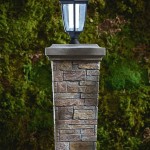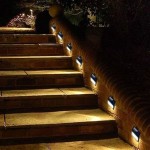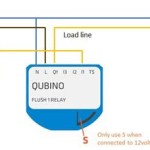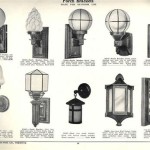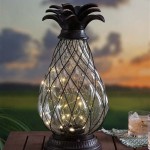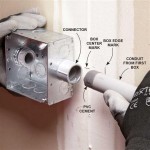What is the Best Outdoor Laser Level? A Comprehensive Guide
Selecting the "best" outdoor laser level is not a universal decision, as it heavily depends on the specific needs, budget, and project scope. A laser level ideally suited for a small residential landscaping project may be inadequate for a large-scale construction site. This article will explore the critical factors to consider when choosing an outdoor laser level, highlighting key features and reviewing types of levels designed for outdoor use.
Laser levels have revolutionized numerous construction and surveying tasks by providing a quick, accurate, and reliable way to establish level or plumb lines over short and long distances. Their ability to project a visible or invisible laser beam onto a target allows for efficient and precise alignment, grading, and leveling. Outdoor environments present unique challenges to laser level operation, including bright sunlight, uneven terrain, and extended working distances.
Therefore, understanding the various specifications, functionalities, and limitations of different laser levels is paramount to making an informed purchase. This guide will examine important aspects such as laser type, range, accuracy, durability, power source, and special features commonly found in outdoor-rated laser levels.
Understanding Laser Level Types for Outdoor Applications
Laser levels designed for outdoor use typically fall into a few main categories: rotary laser levels, pipe lasers, and line lasers with outdoor capabilities. Each type possesses distinct characteristics that make it better suited for certain applications.
Rotary laser levels are perhaps the most common type used outdoors. They project a 360-degree plane of laser light by rapidly rotating a laser beam. This rotating beam creates a horizontal or vertical plane of reference, depending on the orientation of the level. Rotary laser levels are invaluable for grading, excavating, concrete work, and large-scale leveling tasks. Their ability to cover a wide area makes them exceptionally efficient for projects requiring multiple points of reference. Most rotary laser levels are paired with a laser detector (also known as a receiver) to detect the laser beam in bright sunlight, as the beam itself may be difficult or impossible to see with the naked eye.
Pipe lasers are specialized laser levels designed primarily for underground applications, such as installing sewer lines, drainage pipes, and other underground utilities. These lasers are compact and have adjustable feet that allow them to be precisely set within a pipe. They project a highly focused beam that runs along the center axis of the pipe, ensuring accurate alignment and consistent grade over long distances. While primarily intended for pipe-laying applications, pipe lasers can also be adapted for other outdoor tasks requiring a precise, directional beam.
Line lasers project one or more visible laser lines onto a surface. Some models are designed with enhanced brightness and outdoor modes to improve visibility in sunlight. While not as universally applicable as rotary laser levels, line lasers can be useful for tasks like aligning fences, setting deck posts, or establishing a straight line for landscaping features. The effectiveness of line lasers outdoors hinges on the laser's power and the presence of an outdoor mode that pulses the laser beam to enhance visibility when used with a compatible detector.
Key Features to Consider in an Outdoor Laser Level
Several specifications and features influence the performance and suitability of a laser level for outdoor use. Evaluating these factors carefully is vital when selecting the right tool for a given task.
Laser Type and Visibility: The color and power of the laser affect its visibility. Red lasers are standard, but green lasers are typically more visible to the human eye, especially in brighter conditions. Green lasers often come at a higher cost, but the improved visibility can be worth the investment for frequent outdoor use. The laser class is another crucial consideration. Class 2 lasers are generally safe for incidental viewing, while Class 3R and Class 3B lasers pose a greater risk and require more caution. The output power of the laser, usually measured in milliwatts (mW), determines its brightness. A higher power laser will be more visible but may also require additional safety precautions.
Range and Accuracy: The operating range specifies the maximum distance the laser can effectively project its beam. Outdoor laser levels often have ranges extending to hundreds or even thousands of feet when used with a laser detector. Accuracy refers to how closely the laser beam aligns with a true level or plumb line. Accuracy is typically expressed as a tolerance, such as ±1/8 inch at 100 feet. Higher accuracy is essential for projects requiring precise measurements, while lower accuracy may be acceptable for less critical tasks. Understanding the required accuracy for the intended applications is essential to avoid costly errors.
Durability and Weather Resistance: Outdoor laser levels are exposed to various environmental conditions, including dust, moisture, and temperature fluctuations. A rugged design and weather-resistant housing are crucial for ensuring the level's longevity and reliable performance. Ingress Protection (IP) ratings indicate the level's resistance to dust and water. For instance, an IP54 rating signifies protection against dust and splashing water, while an IP65 rating indicates a higher degree of protection against dust and water jets. Selecting a laser level with an appropriate IP rating for the expected environmental conditions is important.
Power Source and Battery Life: The power source affects the convenience and operating cost of the laser level. Common options include rechargeable batteries, alkaline batteries, and AC adapters. Rechargeable batteries offer cost savings and convenience, but battery life can be a concern for extended use. Alkaline batteries provide a reliable power source, but replacements can be expensive. AC adapters allow the laser level to be powered from a standard electrical outlet, but this may not be practical in all outdoor settings. Consider the typical project duration and availability of power sources when selecting a laser level with an appropriate power source and battery life.
Self-Leveling and Calibration: Self-leveling laser levels automatically compensate for minor variations in the mounting surface, saving time and improving accuracy. These levels utilize internal mechanisms (pendulums or electronic sensors) to ensure the laser beam is level or plumb. Manual leveling requires the user to adjust the level manually, which can be time-consuming and prone to error. Regular calibration is essential to maintain the accuracy of a laser level. Many manufacturers recommend calibrating laser levels annually or after any significant impact.
Essential Accessories for Outdoor Laser Level Use
While the laser level itself is the core component, several accessories can significantly enhance its functionality and usability in outdoor environments.
Laser Detector (Receiver): A laser detector is essential for using rotary and line lasers in bright sunlight. The detector senses the laser beam and emits an audible or visual signal when the beam is detected. This allows the user to accurately locate the laser beam even when it is not visible to the naked eye. Laser detectors typically have adjustable sensitivity settings to optimize performance in different lighting conditions. Some detectors also feature digital readouts that display the distance above or below the laser plane.
Tripod: A sturdy tripod is crucial for providing a stable and level platform for the laser level. Tripods specifically designed for laser levels often have adjustable legs and a leveling base that allows for precise adjustments. The tripod's height should be appropriate for the intended application. For example, a taller tripod may be necessary for grading or excavating, while a shorter tripod may suffice for interior applications.
Grade Rod: A grade rod (also known as a leveling rod or story pole) is a graduated measuring tool used to determine the height or elevation of a point relative to the laser plane. Grade rods are typically made of aluminum or fiberglass and have markings in inches, feet, or metric units. The user places the grade rod on the point to be measured and then observes the reading on the rod where it intersects the laser beam. This allows for accurate determination of elevation differences.
Remote Control: Some advanced laser levels come with a remote control that allows the user to adjust the laser settings, such as rotation speed, scan angle, and beam position, from a distance. This can be particularly useful for large-scale projects where the user needs to control the laser level from different locations.
Target Plates: Target plates are reflective surfaces used to enhance the visibility of the laser beam. These plates are particularly useful when working at long distances or in challenging lighting conditions. The reflective surface of the target plate amplifies the laser beam, making it easier to see and locate.
Choosing the "best" outdoor laser level requires a thorough assessment of project needs, budget constraints, and the environmental conditions in which the level will be used. By carefully considering the factors outlined in this article, users can make an informed decision and select a laser level that will provide accurate, reliable, and efficient performance for their outdoor leveling and alignment tasks.

10 Best Ing Outdoor Laser Levels For 2024 The Jerum Post

Best Laser Levels For 2024 Pro Tool Reviews

8 Best Laser Levels For 2024 Reviewed

The Best Laser Levels Of 2024 Popular Science

Top 5 Best Outdoor Laser Levels In 2024 Picks For Any Budget

The Best Laser Levels Of 2024 Popular Science

43 Best Laser Levels For Construction Ideas Level

Choosing A Rotary Laser Level For Professional Use Pro Tool Reviews

The Best Laser Levels For Outdoor Use Reviews In 2024

Best Outdoor Laser Level Reviews 2024

